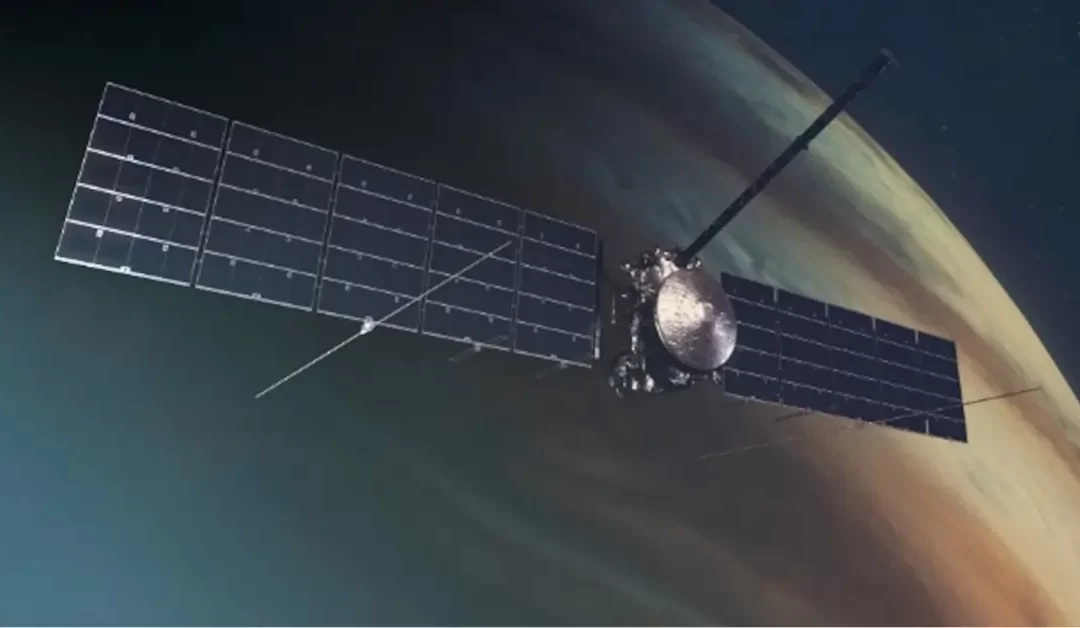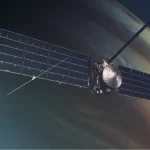NASA’s Europa Clipper, launched from Kennedy Space Center in Florida, is on a historic mission to explore Jupiter’s icy moon, Europa. With a journey spanning 1.6 billion miles (2.6 billion kilometers) and expected to arrive in 2030, the spacecraft is equipped with advanced instruments designed to capture detailed images and collect crucial scientific data. As part of its voyage, Europa Clipper’s star trackers—specialized cameras—are playing a critical role in ensuring precise orientation, a key factor in the success of the mission.
According to technology news today, these star trackers function like a cosmic GPS, identifying distant stars to help the spacecraft maintain accurate positioning. This is crucial for keeping its telecommunications antennas aligned with Earth, ensuring seamless data transmission. Recently, the star trackers captured their first space images, revealing a collection of stars 150 to 300 light-years away. While these images make up just 0.1% of the visible sky, they are essential in helping the spacecraft navigate its vast journey.
Starfield and Mythology
The star trackers’ imagery includes the bright stars Gienah, Algorab, Kraz, and Alchiba, which belong to the Corvus constellation. Corvus, meaning “crow” in Latin, is associated with Apollo in Greek mythology. The presence of these celestial markers underscores the precision of the spacecraft’s guidance system, proving that the technology is functioning as expected.
Ensuring Hardware Integrity
Europa Clipper’s star trackers underwent rigorous testing at NASA’s Jet Propulsion Laboratory (JPL) before launch. These engineering tools constantly capture images, though they typically process data onboard without transmitting it back to Earth. However, in this case, mission engineers opted to receive images to verify that the cameras and their lenses survived the intense conditions of launch.
“The star trackers are crucial for ensuring our spacecraft is correctly oriented,” said Joanie Noonan, who leads guidance, navigation, and control operations at JPL. “While we don’t normally downlink images from them, this time we did, as it helps confirm that everything is working perfectly.”
Key Role in Mission Operations
While the star trackers help orient the spacecraft, navigation itself is handled separately. Maintaining the correct positioning is not just essential for smooth communication with Earth but also for the spacecraft’s scientific operations. The mission’s sophisticated Europa Imaging System (EIS), which will map Europa’s surface in detail, remains sealed behind protective covers for now. However, once operational, it will help scientists analyze the moon’s icy terrain, including its fractures, ridges, and valleys.
Europa Clipper carries nine advanced scientific instruments, alongside telecommunications equipment designed to study Europa’s gravity. Over the course of 49 flybys, the spacecraft will gather critical data to determine whether Europa’s subsurface ocean has conditions suitable for life.
Current Progress and Upcoming Milestones
The latest international news updates confirm that Europa Clipper is already 53 million miles (85 million kilometers) from Earth, traveling at an astonishing speed of 17 miles per second (27 kilometers per second) relative to the Sun. In the next phase of its journey, the spacecraft will make a close flyby of Mars. On March 1, mission engineers will utilize Mars’ gravitational pull to slingshot the spacecraft forward, helping it gain additional speed.
The Scientific Objectives of Europa Clipper
Europa Clipper’s mission is centered around three primary goals:
- Examining the Icy Shell – Scientists aim to determine the thickness of Europa’s ice layer and understand how it interacts with the ocean beneath.
- Investigating Composition – The mission will analyze the moon’s surface materials to uncover its chemical makeup, searching for signs of organic compounds.
- Studying Geological Features – Detailed imaging will help identify geological activity, such as cryovolcanism, which could indicate potential habitability.
The spacecraft’s findings will be instrumental in expanding our understanding of habitable worlds beyond Earth, providing vital information for future interplanetary exploration.
Collaboration Behind the Mission
The Europa Clipper mission is managed by NASA’s Jet Propulsion Laboratory in partnership with Johns Hopkins Applied Physics Laboratory, NASA’s Goddard Space Flight Center, and other institutions. The spacecraft’s main body was designed by APL in collaboration with JPL, while NASA’s Marshall Space Flight Center oversees program management. Meanwhile, NASA’s Launch Services Program, based at Kennedy Space Center, handled the launch logistics.
With each passing day, Europa Clipper moves closer to its goal—an ambitious effort that could unlock the secrets of one of the most intriguing celestial bodies in our solar system.































